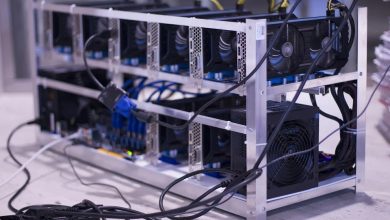
Machine learning is a rapidly evolving technology that allows machines to understand from previous data independently. It employs a variety of algorithms to create statistical models to make forecasts based on past data or knowledge.
It is now being utilized for picture identification, voice recognition, spam filtering, Facebook auto-tagging, recommendation systems, as well as many other activities.
Biometric finding has important implications are also studied by machine learning in order to imitate an individuals personal identity active learning.
What Is Machine Learning?
With in physical universe, humans are accompanied among individuals who could really acquire anything at all from their circumstances due to its ability to learning, because today all have technology or machinery that follow our commands.
Nevertheless, like a creature, how could a machine learn from the past experiences or information? Therefore that is where Machine Learning comes through.
It is a branch of artificial intelligence which promotes the development of algorithms that can learn a computer to understand on its own from data and prior experiences. Arthur Samuel was the first one to coin the terminology in 1959.
In a Summarized way, Without even being specifically coded, technology allows a machine to learn from information, improve the performance via expertise, and make accurate predictions.
Machine learning techniques create a statistical method with the help of actual historical information, referred to as training examples, that aids in predicting things or judgments without really being supervised learning.
In order to create forecasting analytics, machine learning combines computer programming and analytics. Learning is the training of creating or employing algorithms that learn from history information.
More and more knowledge that supply, the better overall effectiveness would be.
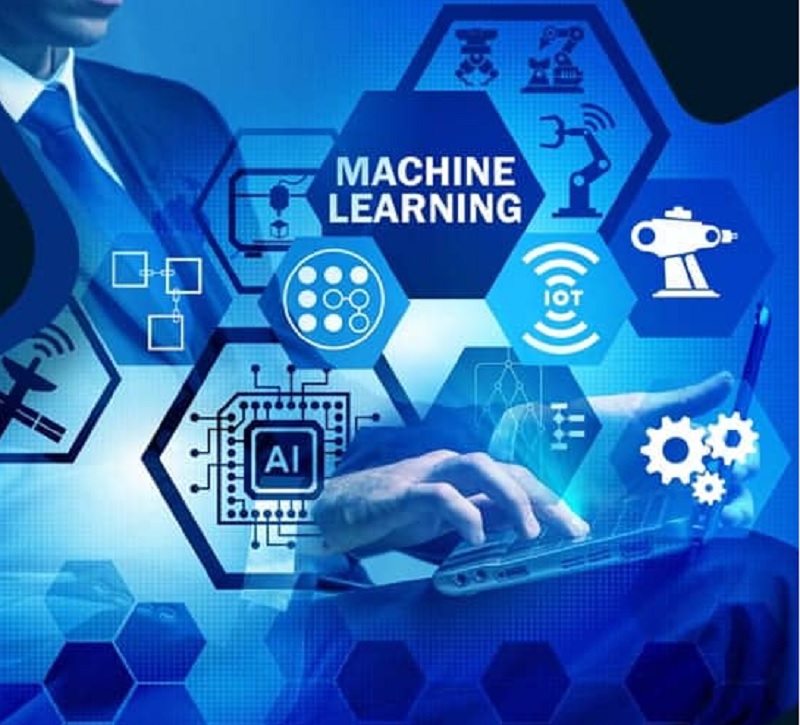
History Of Machine Learning
Machine learning might have been science fiction (around 40-50 years ago), and it is now a part of everyday life. Through self-driving vehicles to Amazon’s personal assistant “Alexa,” machine learning is making human lives easier.
But at the other hand, is a very old concept with a lengthy tradition. The following seem to be some significant events in the history of machine learning:
The Early History of Machine Learning (Pre-1940)
- 1834:- Charles Babbage, the founder of the computer, devised a machine that could have been controlled using batch processing in 1834. Despite the fact that the machine has never been constructed, its overall structure is often used by modern computers.
- 1936:- Alan Turing presented a framework in 1936 describing how well a machine could indeed ascertain and successfully implement a sequence of commands.
The Era Of Stored Program Computers
- 1940:- The very first hand controlled computer, the “ENIAC,” has been created in 1940, and it was also the first electrical broad sense computer. Afterwards when, computers with memorized programs were constructed, such as with the EDSAC in 1949 and the EDVAC in 1951.
- 1943:- An electrical system has been used to mimic a human computational model in 1943. The scientists began putting their theory into practice in 1950, examining whether human neurons could function.
Computer Machinery And Intelligence
- 1950:- Alan Turing presented a foundational work on artificial intelligence, “Computer Machinery and Intelligence,” in 1950. “Could machines assume?” he wondered in the study.
Machine Intelligence In Games
- 1952:- Arthur Samuel, a machine learning innovator, devised a program that assisted an IBM computer in playing for keeps. The further it was used, the stronger it became.
- 1959:- Arthur Samuel initially invented the phrase “machine learning” in 1959.
The First “AI” Winter
- The years 1974 to 1980 were a challenging time for AI and machine learning scientists, and so this period was dubbed “AI winter.”
- During this time, translation software failed, and people who are interested in AI waned, resulting in lower governmental investment in research.
Machine Learning from Theory To Reality
- 1959:- The first neural network has been used to a real-world problem in 1959, when an adjustable filter has been used to reduce reverberation across telephone service.
- 1985:- Terry Sejnowski and Charles Rosenberg created the NET talk neural network in 1985, which would have been capable of teaching oneself how and where to speak 20,000 words properly throughout one week.
- 1997:- Deep Blue, IBM’s intelligent computer, defeated chess champion Garry Kasparov, and become the first computer to defeat a humans chess specialist.
Machine Learning at 21st Century
- 2006:- Geoffrey Hinton, a computer scientist, coined the term “deep learning” to describe neural net research in 2006, and since then it has been one of the most major technologies.
- 2012:- Google developed a deep convolutional neural network in 2012 that learnt to detect humans and cats in YouTube videos.
- 2014:- The Chabot “Eugen Goost man” passed the Turing Test in 2014. The first Chabot was also the one who persuaded the 33% of review petition that it wasn’t a technology.
- 2014:- Facebook launched Deep Face, a deep convolutional neural network which appears to be able to recognize people with much the same accuracy as a human.
- 2016:- At the game of Go, AlphaGo defeated the world’s number two player, Lee Sedol. It defeated the game’s top player, Ke Jie, in 2017.
- 2017:- In 2017, the Jigsaw team at Alphabet created an artificial algorithm which might understand about internet bullying. To discover how to prevent internet trolling, it utilised to analyze millions of comments on various webpages.
Machine Learning At Present
Machine learning has made significant progress in its studies, so it can now be found in a variety of places, including self-driving cars, Amazon Alexa, Catboats, recommendation systems, and many others.
It comprises segmentation, categorization, selection trees, and SVM algorithms, as well as controlled, unsupervised, and recurrent neural networks.
Meteorological prediction, disease prediction, stock market research, and other forecasts may all be made using modern machine learning algorithms.
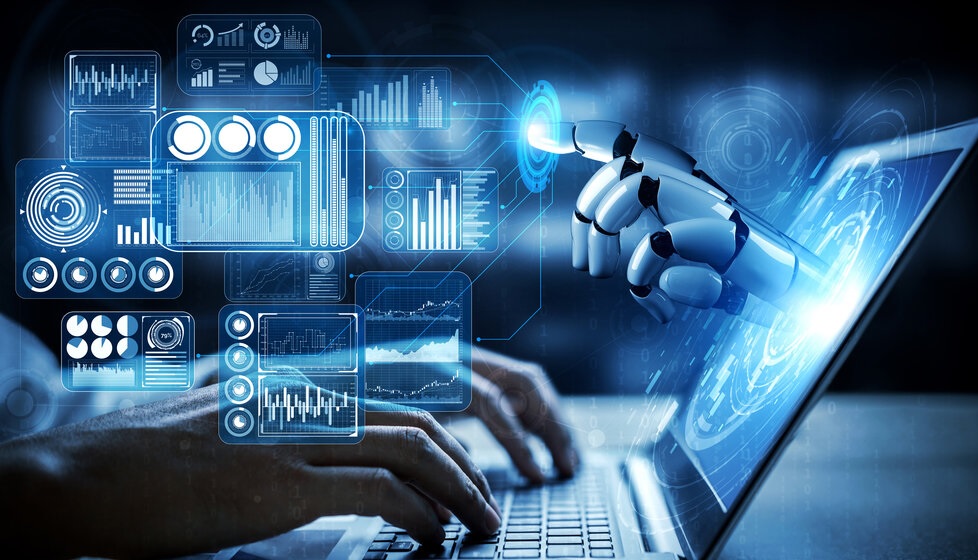
Evolution Of Machine Learning
Machine learning now is not same as learning algorithms in the past, thanks to advances in computing technology. Pattern recognition and the idea that computers could understand without even being configured to execute certain activities gave birth to that though.
Artificial intelligence researchers wanted to examine if machines would understand through information. The continuous feature of machine learning is crucial since models could evolve autonomously as they can be introduced to new information.
They use past equations to provide consistent, predictable judgments and outcomes. It’s a discipline that’s not fresh, but it’s gaining new traction.
Whereas many machine learning techniques have indeed been known for quite a while, the capacity to perform difficult mathematical computations to massive quantities of data continuously – again and over, quicker and better – is a relatively new phenomenon.
Prerequisites
While understanding machine learning, people ought to have a basic understanding of the basic rules to be able to grasp the applications of machine learning:
- Basic statistical and basic mathematical skills are required.
- The capability to program in any programming language, particularly Python.
- Calculus, particularly variations of single variable and multivariate functions, is required.
What Is Required To Create Good Machine Learning System?
- Capabilities for data preparation
- Algorithms are divided into two categories: basic and advanced.
- Incremental processes and automation
- Scalability.
- Ensemble modelling is a term that refers to a group
Machine Learning Process
Creating a Prediction models that could be used to identify a resolution to a Statement Of the problem is part of the Machine Learning process.
- STEP 1: Define the Objective of the Problem Statement
- STEP 2: Data Gathering
- STEP 3: Data Preparation
- STEP 4: Exploratory Data Analysis
- STEP 5: Building a Machine Learning Model
- STEP 6: Model Evaluation and Optimization
- STEP 7: Predictions
Machine Learning And Biometric System
Machine learning have enabled biometrics recognition to work and also has made tremendous progress in biometric pattern recognition. Unsupervised machine learning, supervised learning, and reinforcement learning are the three types of machine learning methodologies.
These methods aid in the responsibilities of biometric system development such as recognition, categorization, grouping, dimension reduction and acknowledgment.
Unsupervised Learning
What Is Unsupervised Learning?
Unsupervised learning is a branch of machine learning which investigates test results that hasn’t even been categorized, labelled, or classified.
Unsupervised machine learning, rather than reacting to reinforcement, discovers similarities in the information and reacts towards the presence or absence of these kind of universals in each new bit of data.

Biometrics And Unsupervised Learning
The unsupervised scientific algorithms are created towards biometric applications that really are primarily focused upon data safety by encryption biometric information, biometric data extraction, feature – based integration, and behavioral pattern identification, among many other things.
Furthermore, biometric systems that use unsupervised learning provide improved learning strategies and registrations, allowing for greater categorization and precise evidence localization of biometric traits.
- Unsupervised Learning In Finger Vein Pattern
It could be used to obtain full-automated finger vein patterns. This technique is thought to be one of the best ways to recognise biometric patterns.
Nevertheless, it is typically only used as a starting point for data gathering, enhance educational policy formulation, and information fusion (clustering tasks), among other things.
It could be thought of as a first step in addressing with data difficulties in terms of improving categorization labors.
Unsupervised Learning could also be used to fully automate the identification of finger vein patterns.
- Unsupervised Learning In Fingerprint Recognition
For cooperation method adaption, an incremental Unspoken assumption method has been used to enhance fingerprint recognition.
- Retinal Pattern Matching
Vlachos and Dermatan offer the closest neighbor clustering algorithm (NNCA), an unique unsupervised clustering technique that has already been effectively employed for retinal vascular identification.
- Voice Detection
The Voice activity recognition method has been proposed by scientist Bahari. For wirelessly acoustical sensing devices, he devised a decentralized power signals piecewise approach for locating clusters surrounding every emitter .
Read Also-The Great Resignation: Why Considerable Number of Workers are Quitting?
For speech movement origin identification, unsupervised learning methods such as K-Means, K-medians, and K-medoids have been utilized. The biometric voice characteristics were then extracted from of the collected radiation levels using the clustering technique.
Supervised Learning
What Is Supervised Learning?
Supervised learning is a current method of learning a functionality which insinuates a position from training examples by mapping an intake to an outcome using instance input-output combinations.
The information in supervised learning is made up of a series of training instances, and each one is a pair consisting of an input sequence and the intended output value, or supervisory message.
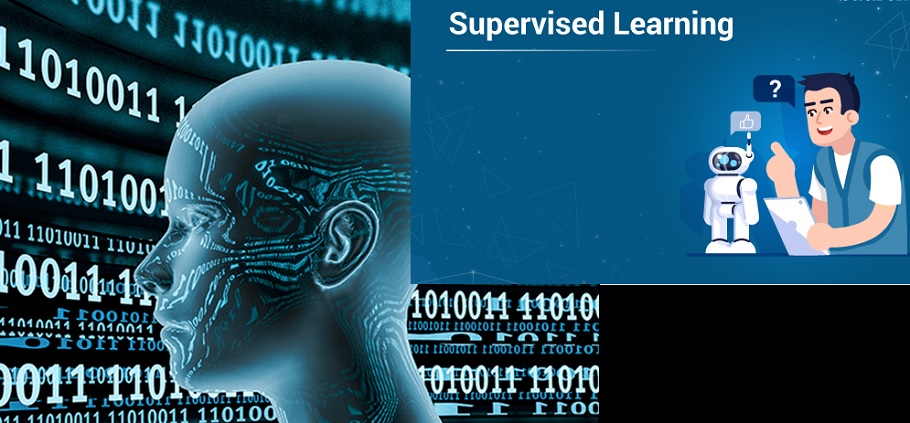
The training algorithm analyses the retraining data and provides an assumed functionality for classifying new instances.
Biometrics And Supervised Learning
Using a variety of techniques, supervised learning has been around for a variety of biometric applications.
Read Also-What Is a VPN? – Virtual Private Network
Unlike unsupervised learning, which primarily uses the K-means algorithm for biometric applications, supervised learning usually uses a range of methodologies for biometric pattern recognition.
The following are a few supervised learning algorithms:
- Convolutional Neural Nets (CNN)
- Kernel Methods (SVM, Kernel Perceptron)
- Decision Trees
- Logistic Regression
- Face Recognition
For accurate facial recognition Biometrics, the Supervised Learning method ‘Decision Trees’ is used. This algorithm has a maximal rate of 100 percent on the FERET collection and 99 percent on the CAS-PEALR1 dataset, according to the current survey.
- Speech Emotion Classification
The ‘Support Vector Machines (SVM)’ method is applied for autonomous speaker recognition. Based on the methods used, the average performance for image and speech identification ranged from 50% to 90%.
- Facial Emotion Recognition
Face expression biometric recognition using the ‘Kernel Perceptron’ Learning method. Just on JAFFE dataset, the classification recognizes the 6 distinct Emotions with 98.6% accuracy.
Reinforcement Learning
Reinforcement learning is a type of flexible machine learning software that uses a performance – based compensation mechanism to teach computers how to accomplish a new challenge.
The learning technology is involved about autonomous agents that do essential activities in real-time to maximize certain idea of exponentially increasing compensation.
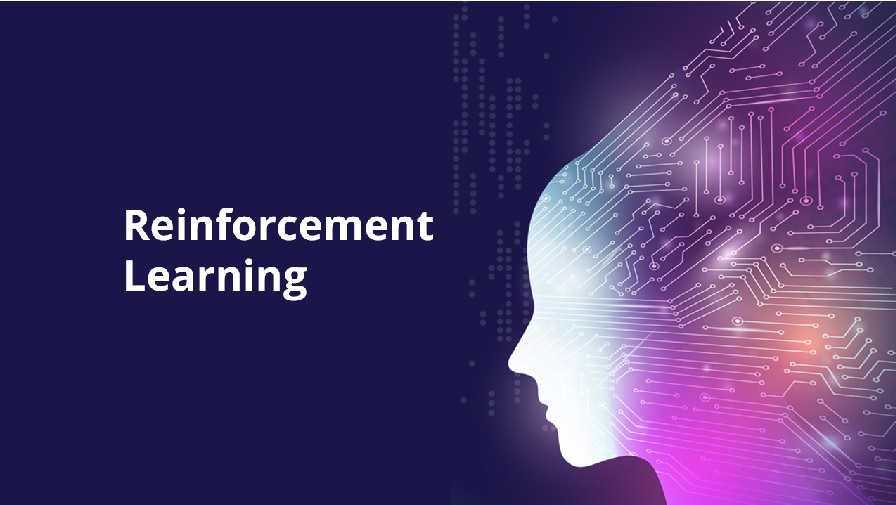
Biometrics And Reinforcement Learning
Compared to supervised and unsupervised learning, reinforcement learning appears to become more adaptable. It can be used for both monitored and unsupervised labour. Reinforcement learning, on the other hand, is restricted to surprisingly low tasks.
Read Also-What Is 3D Animation ? – IGW – Infographic World
However, Deep Reinforcement Learning (DRL) has proven to be successful in resolving this issue. Despite DRL’s successes, a number of challenges must be resolved before all these techniques may be used to a wide variety of different actual problems.
Types Of Problems In Machine Learning
| Regression | Classification | Clustering |
| Supervised | Supervised | Unsupervised |
| The term “output” involves a continuous process quantity. | The term “output” refers to a categorical quantity. | Data points are assigned to clusters. |
| The main goal is to anticipate or predict the future. | The main goal is to determine the data category. | The main goal is to create a cluster of related items. |
| Eg. Predict Stock Market Price | Eg. Classify Emails as spam or non spam | Eg. Find all transactions which are fraudulent in nature |
| Algorithm: Liner Regression | Algorithm: Logistic Regression | Algorithm: K- means |

Key Service Capabilities For The Full Machine Learning Lifecycle
- Data Labeling
With machine learning–assisted labeled, users can design, administer, and analyze labelling initiatives as well as automate incremental chores.
- Data Preparation
Utilizing PySpark’s built-in Azure Synaptic Intelligence interface, do interactive information preparation.
- Collaborative Notebook
Human understanding, quick computation and kernel switching, and offline notebook editing make users take more done. For something like a comprehensive programming experience, open the notebook in Visual Studio Code, which includes safe monitoring and compatibility for Git source control.
- Automated Machine Learning
Established paradigm categorization, analysis, and moment prediction model quickly. Model applicability can help you figure out that the model was developed.
- Drag And Drop Machine Learning
To simply develop and deliver machine learning workflows, utilize machine learning techniques like architect for data processing, model construction, and assessment.
- Reinforcement Learning
Allow additional situations, scale reinforcement learning to strong computational complexes, and use open-source reinforcement supervised learning, platforms, and ecosystems.
- Responsible Machine Learning
Using interpretability capabilities, users can get modeling transparency during training and validation. Assess model justice using discrepancy measures and take steps to correct any inequity.
With both the interpretation toolkit, users can performance benchmarking dependability and find and treat modeling flaws. Privacy preservation can serve to protect information.
- Experimentation
For instruction and exploration, control and report runs or analyze numerous runs. Make ones own dashboards and share them with the colleagues.
- Model Registry And Audit Trail
Capture and monitor data, models, and information in the central registry. With an audit trail, constantly record provenance and control information.
- Git And GitHub
To create ML processes, use Git integration and GitHub Actions compatibility.
- Managed Endpoints
To operationalize model installation and grading, log measurements, and conduct safe modeling implementations, use controlled endpoints.
- Autoscaling Compute
Spread learning and quickly test, verify, and step is to send with shared compute. Automatically scale to suit business computer vision demands by sharing CPU and GPU clusters along a workspaces.
- Deep Integration
Improve productivity with built-in Microsoft BI and applications connectivity.
- Hybrid and Multi cloud Support
In multi – cloud situations, run deep learning on current Kubernetes clusters on premises. Begin training networks more safely with the one-click deep learning agent, no matter where the data is stored.
- Enterprise Grade Security
Through networking isolation and edge private IP features, position admission management for resource and activities, customized roles, and controlled identification for computational resources, users can create and deploy simulations more effectively.
- Cost Management
With workspaces and commodity quota limitations and lock screen, IT may save money and better manage resource utilization for compute instances.
Who Is Using Machine Learning?
- Financial Services
- Government
- Health care
- Retail
- oil and Gas
- Transportation
Advantages And Disadvantages
| Advantages | Disadvantages |
| It can assist businesses in gaining a better understanding of their customers. | Data scientists, who are paid well, are usually in charge of projects. |
| It assist teams in customizing research and development. | Algorithms trained on data sets that would exclude specific populations or contain flaws can result in erroneous world models that fail at best and discriminate at worst. |
| Algorithms for machine learning could discover associations. | When a company’s key business activities are based on skewed assumptions, it risks regulatory and refers to the responsibility. |
| Machine learning is a main factor in the marketing strategies of several companies. | It can be quite costly. |

Challenges Of Machine Learning
- Technological Singularity
computer intelligence that surpasses the greatest human brains in almost every field, notably scientific inventiveness, generalized wisdom, and social abilities.
- AI Impacts On Jobs
Although job loss is a serious worry in the public eye when it comes to artificial intelligence, this fear should definitely be rephrased. The marketplace need for specific occupations shifts with each revolutionary technological advances.
- Privacy
Data privacy, data protection, and data security are often considered in conjunction with privacy, and these considerations have enabled politicians to make progress in this area in recent times.
- Bias And Discrimination
Bias and discrimination in a variety of intelligent systems have prompted numerous ethical concerns about using artificial intelligence. Bias and discrimination aren’t just confined to the HR department; they can indeed be found in anything from facial recognition software to social media algorithms.
- Accountability
There really is no genuine regulatory way of guaranteeing that ethical AI is implemented because there is no because its to control AI techniques. The present incentives for businesses to follow these principles are the financial consequences of an immoral AI system.
Future Of Machine Learning
Machine learning platforms are one of the most competitive markets in enterprise software, with top vendors such as Amazon, Google, Microsoft, IBM, and others winning a race to sign up a customer for technology platforms that includes the entire range of machine learning activities, such as data collection, data preprocessing, clustering techniques, model development, training, and application services.
The machine learning platform conflicts would only grow as machine learning is becoming more important to business operations and AI becomes more feasible in corporate contexts.
Conclusion
The same dynamics that already have made data gathering and Bayesian analysis more prominent than ever are driving growing interest in machine learning. Things like increasing data volumes and variety, lower and more efficient computing computing, and economical storage systems.
All of this means that models that can evaluate larger, more complicated data and offer faster, more accurate answers – even on a massive scale – can be created quickly and accurately. An organization’s chances of recognizing profitable possibilities – or averting unforeseen risks – are improved by developing detailed models.
What Are Areas Of Machine Learning?
- Deep Learning
- Statistical Classification
- Artificial Neural Network
- Reinforcement Learning
What Is Prediction Machine Learning?
When anticipating the likelihood of a particular result, including whether or not a consumer would churn in 30 days, “prediction” refers to the outcome of an algorithm once it has been taught on a previous dataset and adapted to specific data.
What Is Machine Learning Used For?
Machine learning is utilized in many apps on mobile phones, including search engines, spam protection, websites that generate personalized suggestions, financial software that detects fraudulent transactions, and speech recognition.
What is Machine Learning Example?
In the actual world, image recognition is a very well and widely used example of machine learning. Depending on the severity of the pixel in black and white or color photos, it may recognize an entity as a digital image. Image recognition instances in the real world: Determine whether an x-ray is malignant or not.



